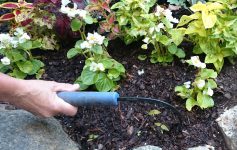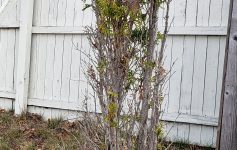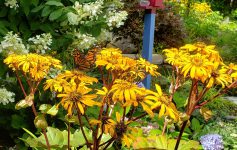This time of year everyone loves to see an awesome triple play in baseball. Yes of course the homerun out of the park is the ‘holy cow” moment, but there is something about a triple play that says to me, there is more timing, precision and skill to rounding the bases.
I liken a great mulch to the avid gardener’s seasonal “triple play” Now there are all kinds of materials used for mulching but to clarify here, I am speaking of good old organically based combinations of locally sourced bark and compost…… no red , black dyed stuff or synthetically manufactured. Living in our region we are fortunate to have local resources that can provide you with fresh ground, organically rich mulch for your gardens.
But why mulch in the first place? I believe a good 2 inch mulch top dressing on your new and existing gardens should be part of any good maintenance practices as the benefits make it well worth the early seasonal effort. First and foremost, a good mulch will help inhibit weed germination and growth. It will not stop growth of existing weeds. So before you apply, make sure you do a good garden cleaning. Mulch also helps to retain soil moisture during dry periods. At present we have had lots of spring rain, so not a problem, but come late July and August your plants will thank you for their root cover!
And speaking of protecting roots, our cold windy winters can do remarkable damage to plant roots, Frost heaving, where plants can literally be pushed out of the ground from natural expansion and contraction of the soil as it cools and heats, (think cracked cement walkways) can be avoided with a good mulch dressing. Using locally sourced wood bark and compost combinations also provides added nutrition to your plants through the natural decomposition. Great way to feed your plants from the root up!
In addition to protection and feeding of your plants, a good mulch will add an aesthetic quality to your garden. In the spring as the plants are emerging, mulch serves as the flow and continuity in between while inhibiting the weeds.
When selecting mulch always ask about the content. Did you know construction and demolition waste is often ground into some mulches? Roadside debris, to include diseased plant material is also commonly used in some sources of mulch. I recently visited a property where the owner could not control the weeds in his garden beds. When he revealed his mulch source I knew immediately the root of the problem as I am familiar with what materials are used in that mulch source. I proceeded to suggest he clean out the beds a (a grueling labor intensive task) and change his mulch provider.
It is also important to ask about the compost level added to the mulch (if any). Living in close proximity to a horse racing facility provides options for manure to be used as the compost in mulch and topsoil. But beware as this can also lead to foreign weed seeds in your gardens. Horses come from all over the country to Saratoga Springs, and the introduction of feed and seeds can bring some very unwelcome characters to your garden. So when making your selection it is important to ask what makes up the mulch
Then there is the color. Did you know that many commercially bagged, colored mulches are just wood chips dyed to the color. So not only is there chemical residue you are placing in your garden, but the chips don’t’ decompose, they merely fade to a discouraging grey color over time. An organically based, longer aged mulch can give you the darker colors of brown you may desire. But sorry folks,…there is no natural in red and jet black unless it is dyed. Now there are sources who do claim their dyes are completely organic. So just ask your provider or read the contents of your bag.
So a good base of organic bark mulch in the garden.. a true triple play of protection, nutrition and aesthetics!.



